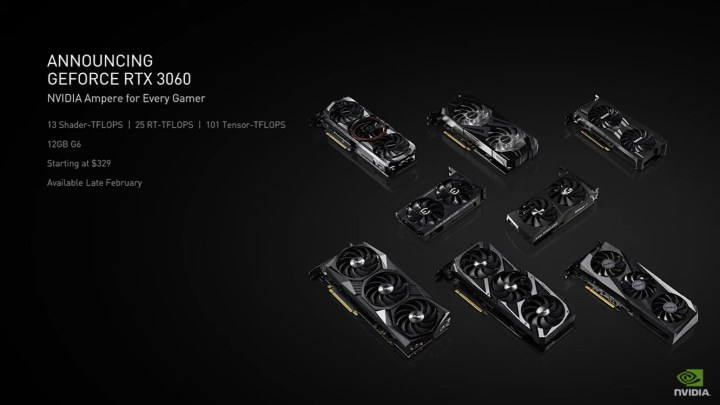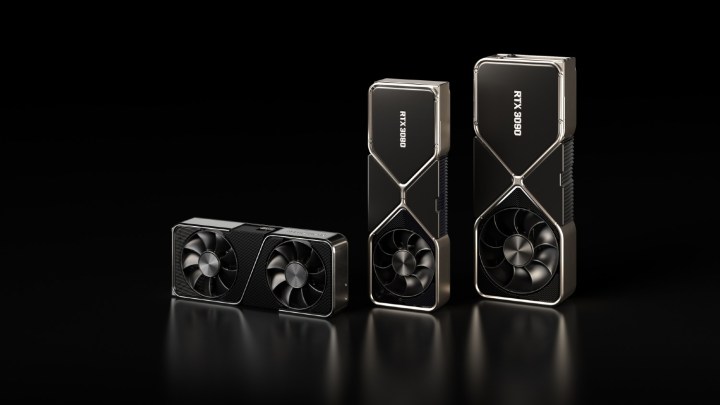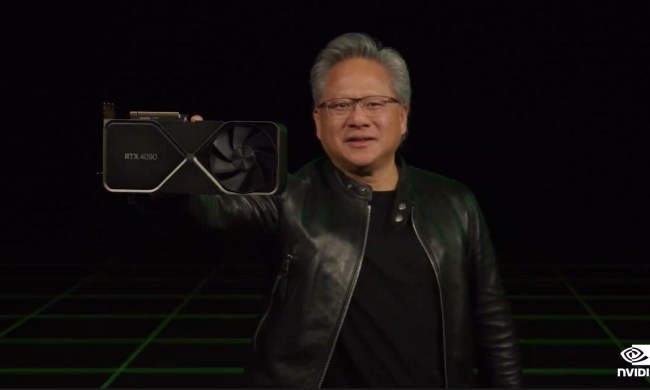The RTX 3060 Ti, 3070, and recently released 3060 all target the upper-midrange price bracket, delivering excellent performance for AAA games at 1080p and 1440p. This “sweet spot” between $300 and $500 delivers the best performance per dollar, as the more expensive RTX 3080 and 3090 show diminishing returns.
But which one should you pick? All three target the sweet spot, but they’re built for very different gamers. Spending more will yield better performance, but certain cards punch above their price point.
Pricing and availability

Although announced at the same time as the RTX 3080 and 3090, the RTX 3070 released slightly later than Nvidia’s leading cards, on October 29, 2020. The RTX 3060 Ti was announced and released later, debuting on December 2, 2020.
Keeping in line with the last gen’s counterparts, the 3070 and 3060 Ti released with an MSRP of $499 and $399, respectively. Finding any of Nvidia’s Ampere cards in stock, much less for their MSRP, is a different story, however. If you can find one of these cards in stock, expect to pay $50 to $100 more, at least. Some retailers are even marking up cards beyond what’s expected of board partner cards. Newegg, for example, will frequently restock these cards as bundles, including something like a power supply or a stick of RAM.
The RTX 3060 was released in late February with a launch price of $329. Like other RTX cards though, its price and stock numbers are incredibly poor, with some cards selling for up to $500.
The secondhand market is nonexistent. There are listings for the RTX 3070 and 3060 Ti on eBay, Facebook Marketplace, and the like, but they’re almost exclusively from scalpers or secondhand sellers willing to charge scalper prices. Expect to pay around twice the MSRP if you’re shopping on the secondhand market (sometimes even more). The most recent RTX 3060, for example, is listed anywhere from $800 to $1,200 on eBay as of March 2021.
Specs: What’s up with the RTX 3060’s 12GB of VRAM?

Between the 3070 and 3060 Ti, there’s a gradual drop in specs. Both cards feature 8GB of GDDR6 memory on a 256-bit bus. The 3060 Ti has around 1,000 fewer CUDA cores, however, as well as a slightly lower base and boost clock speed. The recently released RTX 3060 throws a wrench in the system with a surprising 12GB of GDDR6 memory.
| RTX 3060 | RTX 3060 Ti | RTX 3070 | |
| CUDA cores | 3584 | 4864 | 5888 |
| Boost clock | 1.78GHz | 1.67GHz | 1.73GHz |
| Memory | 12GB GDDR6 | 8GB GDDR6 | 8GB GDDR6 |
| Memory interface | 192-bit | 256-bit | 256-bit |
| TDP | 170w | 200w | 220w |
That’s 50% more memory than the 3060 Ti and 3070. In fact, the RTX 3060 has 2GB more than the flagship RTX 3080 (though, the 3060 uses GDDR6, not GDDR6X like the 3080). The 3060 also has a higher boost clock than the 3060 Ti and 3070, over 100Mhz faster than the 3060 Ti.
The bottleneck is the 192-bit memory bus on the RTX 3060. Without getting too technical, a smaller memory interface means less data going to and coming from the GPU’s memory each second. That means that even though the 3060 has more memory than the other two cards, its overall bandwidth is almost 100GBps less.
Between the three cards, there’s little in power difference, with the RTX 3060 drawing only 170w and the RTX 3070 drawing up to 220w. Nvidia recommends a different power supply for each card, however. You should use a 550w, 600w, or 650w PSU for the RTX 3060, 3060 Ti, or 3070, respectively.
Performance

When it comes to performance, the more expensive RTX 3070, unsurprisingly, leads the pack. As we saw in our RTX 3080 review, the 3000-series cards perform about two steps above the previous generation, positioning the RTX 3070 on the performance level of the $1,200 2080 Ti. And benchmarks back that up. The $500 RTX 3070 performs as well or better than the 2080 Ti in most games at 1440p and 4K.
That puts it above the RX 5700 XT, RTX 2080 Super, and Radeon VII, taking a backseat only to the pricier RTX 3080 and 3090.
For $100 less, the RTX 3060 Ti is remarkably close. In games like Borderlands 3 and Far Cry 5 at 1440p, the 3060 Ti trails the 3070 by around 10 frames per second (fps). The gap closes to between three and five frames when overclocking the 3060 Ti. That places the 3060 Ti below the RTX 2080 Ti, though above the 2080 Super. At 1080p, there’s less of a difference between the 3060 Ti and 3070, and at 4K, the gap widens.
Neither card is well equipped for 4K, sitting below 60 fps in most titles. For 1440p, the RTX 3070 is a slightly better option. If you’re gaming at 1080p, however, there’s a negligible difference between the 3060 Ti and 3070 in most games, so it’s best to save yourself the $100.
The RTX 3060 is the newest card in the range, announced during Nvidia’s CES 2021 keynote. Despite a massive 12GB of memory, the RTX 3060 is much weaker than the 3060 Ti and 3070. Benchmarks show it performing slightly above the RTX 2060 Super with stock speeds, and boosting up to RTX 2070 Super performance when overclocked.
As mentioned, most Ampere cards perform two steps above the previous generation, which would position the RTX 3060 somewhere between the RTX 2070 and 2080. That’s not the case, though. The RTX 3060 sticks with Nvidia’s previously established generational improvement, performing about as well as a step up from the previous generation (in this case, the RTX 2070).
There isn’t a clear winner for performance, but there is a clear loser. The RTX 3060 Ti offers the best value out of the three cards, while the RTX 3070 is slightly more expensive for slightly more performance. On the other hand, the RTX 3060 provides decent performance while only saving you $70 over the RTX 3060 Ti. It’s hard recommending Nvidia’s cheapest Ampere card when the next step up performs so much better.
Targeting the sweet spot

Between $329 and $499, the 3060, 3060 Ti, and 3070 are all targeting the sweet spot between price and performance. All three cards should deliver excellent performance in e-sports titles like Fortnite and Apex Legends, and around 60 fps for most new AAA games at 1080p or 1440p. The range is impressive across the board, so it’s hard to make a bad decision when choosing one.
We have some recommendations, though. If you’re gaming at 1440p primarily, the RTX 3070 is the best option. That card will deliver above 60 fps in most AAA games for many years to come, allowing you to use high to ultra settings. The RTX 3060 Ti is still a good option at 1440p, especially if you’re overclocking. However, you may have to turn down some graphical settings after several years. Now, and for the next few years, the 3060 Ti is still a good 1440p option.
At 1080p, the 3060 Ti rules the roost. The 3070 is still a more powerful card, so it’ll deliver higher frame rates at 1080p. The benefits aren’t as noticeable or important at 1080p, however, making the 3060 Ti the best option overall.
We expected the 3060 to dethrone the Ti variant as the 1080p champion, but that didn’t happen. Nvidia delivered on its promise of 2070 performance for the price of a 2060, but that’s just not enough compared to the 3060 Ti and 3070. You probably won’t find any of these cards for their MSRP, either, so you may as well stick with the better-performing cards.




